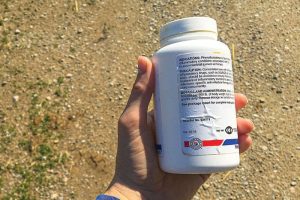
Sweet Itch: Itching for a Cure
There’s nothing appealing about this seasonal skin condition. Here’s what experts know about managing, treating, and preventing sweet itch in horses.

There’s nothing appealing about this seasonal skin condition. Here’s what experts know about managing, treating, and preventing sweet itch in horses.

Horses on antibiotics might experience feeding, housing, and management changes as well as increased stress, which are associated with gastric ulcer development.

Probiotics might help reestablish healthy balances in the horse’s gut microbiome without causing harm.

A sports medicine specialist looks at what could cause a Western dressage horse to travel haunches-in during the right-lead canter.

Merck has added 4 new lots of Banamine/Banamine-S to its previous recall.

Researchers have developed a new recommendation for horses being treated with the drug for a period of eight weeks.

Dr. Robert Jacobs describes the potential effects of long-term NSAID use on the horse’s gut microbiome.

Three lots of Banamine have been recalled due to the presence of particulate matter.

Detecting and managing osteoarthritis in its early stages can go a long way toward keeping your horse sound, comfortable, and happy in his job for years to come.

Experts answer common questions about this crippling condition that affects horses of all breeds, disciplines, and ages.

A veterinarian explains why antiprotozoals are unlikely to cause resistance among the protozoan parasites that cause EPM in horses.

Dr. Susan White describes options for treating laminitis-prone EMS horses that also suffer from allergies.

Researchers believe CBD might be safe for use in senior horses and are working to determine its efficacy in reducing inflamm-aging.

This legislation means horse owners can no longer purchase certain antibiotics over the counter from feed stores or tack shops.

A veterinarian addresses whether oral aloe vera could help horses with gastric ulcers and offers evidence-based alternatives.

Donkeys might benefit from higher doses of morphine for pain relief than what veterinarians usually prescribe for horses.
Stay on top of the most recent Horse Health news with
© 2022 Copyright Statement dolor sit amet, consetetur sadipscing User Terms, sed diam nonumy eirmod tempor invidunt ut labore et dolore magna aliquyam erat, sed diam voluptua. At vero eos et accusam et justo duo dolores et ea rebum. Stet clita kasd gubergren, no sea takimata sanctus est Lorem ipsum dolor sit amet.
"*" indicates required fields